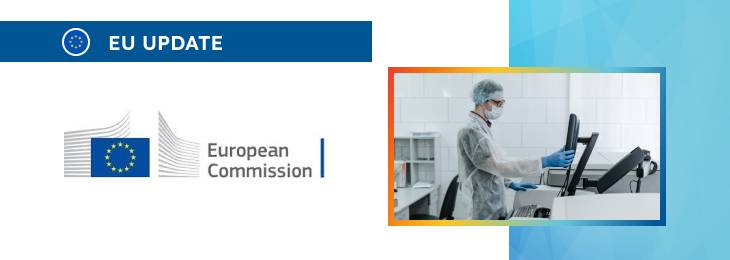The new article describes the way study benefits and objectives should be reflected in a clinical investigation plan.

Table of content
The Medical Device Coordination Group (MDGC), an advisory body composed of the representatives of the EU Member States focused on the general improvement of the regulatory framework in the sphere of medical devices, has published a guidance document dedicated to the content of the clinical investigation plan for clinical investigations of medical devices.
The document provides an overview of the applicable regulatory requirements, as well as additional clarifications and recommendations to be taken into consideration by medical device manufacturers, study sponsors, and other parties involved in operations with medical devices, including clinical investigations, to ensure compliance to it.
At the same time, MDCG reserves the right to make changes to the guidance and recommendations provided therein, should such changes be reasonably necessary to reflect corresponding amendments to the underlying legislation or accommodate the recent technology developments and arising needs.
In particular, the document describes in detail the content of a Clinical Investigation Plan (CIP) to be prepared by the responsible parties, highlighting the key aspects to be considered.
Potential Benefits
According to the guidance, a CIP should provide a detailed description of various benefits associated with the study planned. The document distinguishes different types of benefits and outlines the differences among them.

Direct and Indirect Benefits to Study Subjects
Under the general rule, the introduction of an investigational device is anticipated to bring significant benefits not only to the participants of the study but also to a broader range of individuals including caregivers, family members, and healthcare personnel. These benefits range from direct therapeutic effects to improvements in public health systems. As explained in the document, the key considerations include:
- Type and Magnitude of Benefits: Evaluating the nature and extent of the expected benefits.
- Probability of Experiencing Benefits: Assessing the likelihood of benefits occurring and identifying subgroups with higher chances of experiencing these positive outcomes.
- Duration of Benefits: Determining how long the benefits are expected to last, providing a timeframe for anticipated improvements.
- Medical Necessity and Unmet Needs: Identifying the unique advantages of the device over existing therapies or devices and its capability to meet previously unaddressed needs.
Moreover, the consideration of regional variations in the availability of alternative treatments plays a crucial role in assessing benefits, which might vary significantly across different geographical locations. This aspect, if relevant, should also be duly reflected in a plan.
Benefit to Others
Apart from the direct impact on study subjects, the investigation explores the extended benefits to individuals closely associated with the participants, including healthcare workers and family members, emphasizing the comprehensive positive ripple effects of the device.
Risk Tolerance and Patient Preference
The document also considers various risks associated with the device in question and the clinical investigation to be conducted.
This includes, among other things, the aspects related to assessing, identifying, and characterizing risks and special considerations for specific categories of patients.
Identification and Characterization of Risks
First, the document emphasizes that all the potential risks associated with the device are subject to investigation. Those associated with the procedure should be adequately identified and listed in a clinical investigation plan. According to the document, the key factors in risk assessment include:
- Types of Risks: Analyzing risks based on their nature and the study design.
- Likelihood and Severity of Risks: Evaluating the probability of risks occurring and their potential impact on health.
- Mitigation Strategies: Implementing measures to minimize risks through device design, protective measures, and effective communication strategies.
Special Considerations for Vulnerable Populations
The investigation plan should pay special attention to vulnerable groups, ensuring that the expected benefits justify their participation and minimize risks to the greatest extent possible.
Balancing Benefits and Risks: The Benefit-Risk Ratio
When describing the associated risks, the document refers to one of the cornerstone principles – the benefit-risk ratio- that establishes the relationship between the benefits associated with the device in question and the corresponding risks.
In particular, the responsible parties are expected to provide a thorough evaluation and rationale behind the conclusions provided.
This involves critically reviewing preclinical data and prior clinical assessment to justify the investigation’s design and objectives.
Relevance of the Clinical Investigation
The document also highlights the aspects related to the relevance of the clinical investigation and the potential results thereof. In particular, the guidance outlines specific matters to be considered in this respect.
State of the Art and Clinical Development
By discussing the investigation’s relevance in the current clinical practice landscape, this section outlines the device’s position within the broader context of medical device development.
It justifies the investigation’s design based on a thorough evaluation of preclinical and clinical data relevant to the device’s intended use.
Objectives, Hypotheses, and Endpoints
The investigation’s goals will be delineated, including primary, secondary, and exploratory objectives.
The report should provide details on the scientific and clinical justifications for these objectives, the hypotheses being tested, and the criteria for assessing the device’s performance and safety.
It should also emphasize the relevance of these endpoints to the target population, ensuring that the investigation’s outcomes will provide meaningful insights into the device’s efficacy and safety.
Conclusion
The present guidance provides additional clarifications concerning the approach to be followed concerning risk assessment when planning a clinical investigation. The document also explains how study objectives should be reflected in the plan.
How Can RegDesk Help?
RegDesk is a holistic Regulatory Information Management System that provides medical device and pharma companies with regulatory intelligence for over 120 markets worldwide. It can help you prepare and publish global applications, manage standards, run change assessments, and obtain real-time alerts on regulatory changes through a centralized platform. Our clients also have access to our network of over 4000 compliance experts worldwide to obtain verification on critical questions. Global expansion has never been this simple.

